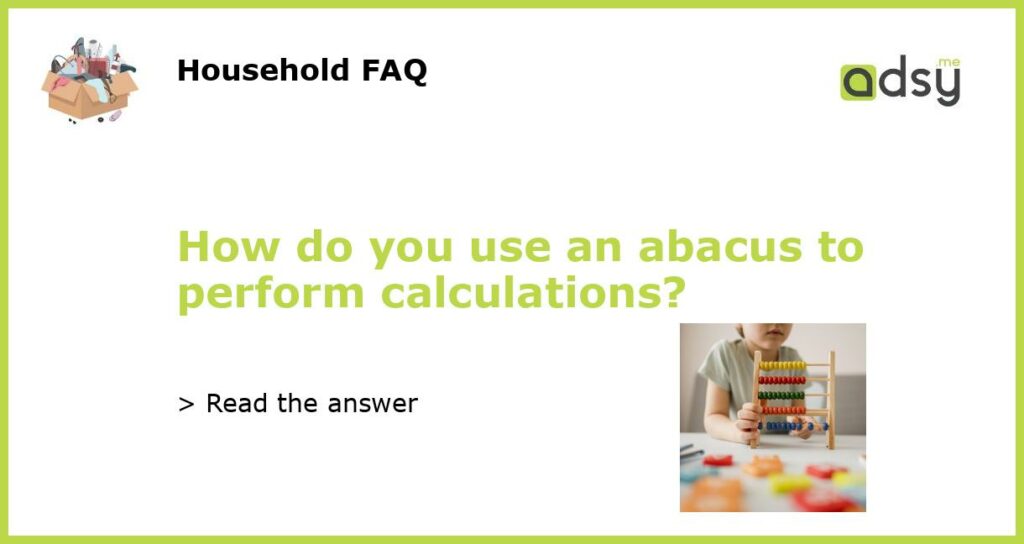Understanding the Abacus: A Brief Introduction
If you’re not already familiar with an abacus, it’s an ancient mathematical tool used for performing basic arithmetic. It consists of a frame with several rows of beads, which represent different place values (such as ones, tens, hundreds, etc.). The abacus has been used for centuries in various cultures around the world, and is still used today in some parts of the world for teaching math to young children.
The Basics of Using an Abacus
Using an abacus may seem intimidating at first, but it’s actually a fairly simple process. The first step is to understand the value of each bead on the abacus. Typically, each row represents a different place value (ones, tens, hundreds, etc.), with each bead representing either one or five units of that value. For example, on the ones row, one bead may represent one unit, while on the tens row, one bead may represent five units.
Performing Addition and Subtraction with an Abacus
Performing addition and subtraction with an abacus is a fairly straightforward process as well. To add two numbers together, you simply move beads from the ones row on one side of the abacus to the ones row on the other side, then move any remaining beads up to the next row (tens, hundreds, etc.) as necessary. To subtract two numbers, you do the opposite: move beads from the ones row on one side of the abacus to the ones row on the other side, then move any remaining beads down to the next row (tens, hundreds, etc.) as necessary.
Advanced Uses for the Abacus
While the abacus is primarily used for basic arithmetic, it can also be used for more complex calculations such as multiplication and division. These processes require a bit more knowledge and skill, but they’re still possible with an abacus. To multiply two numbers together, for example, you would use a series of addition and shifting operations to arrive at the final answer. To divide two numbers, you would use a similar series of subtraction and shifting operations.
The Benefits of Using an Abacus
While the abacus may seem like a primitive tool compared to modern calculators and computers, it actually has several benefits. For one, it can help build a strong foundation in basic arithmetic skills. Additionally, using an abacus can help improve hand-eye coordination and fine motor skills. Finally, the abacus is a great tool for visual learners, as it provides a tangible representation of mathematical concepts.






